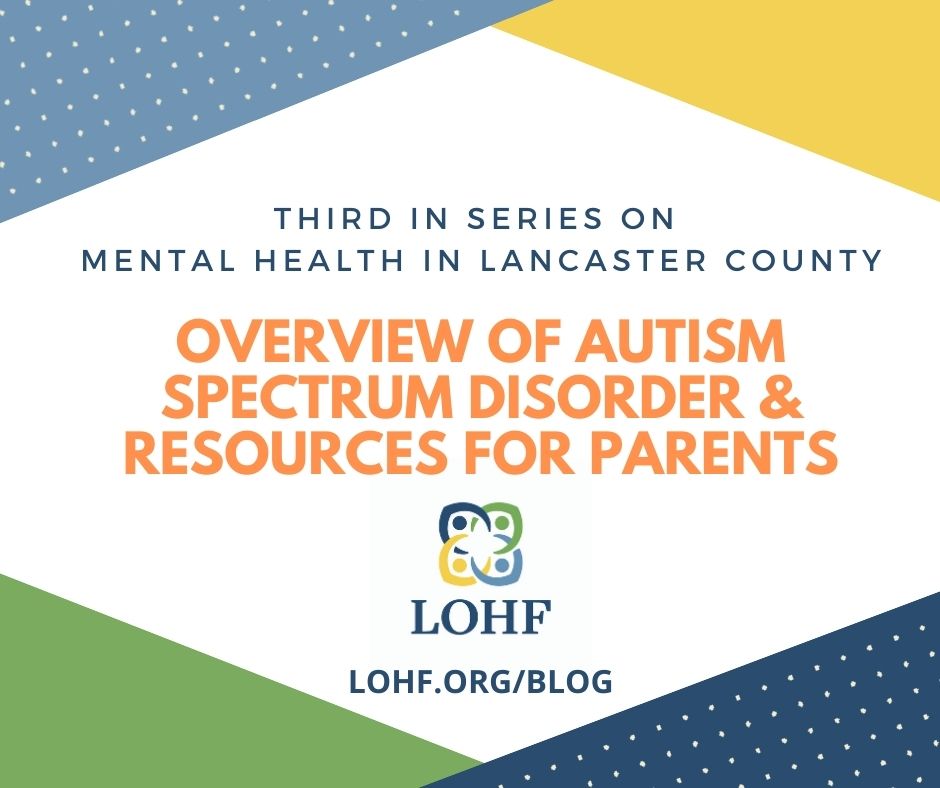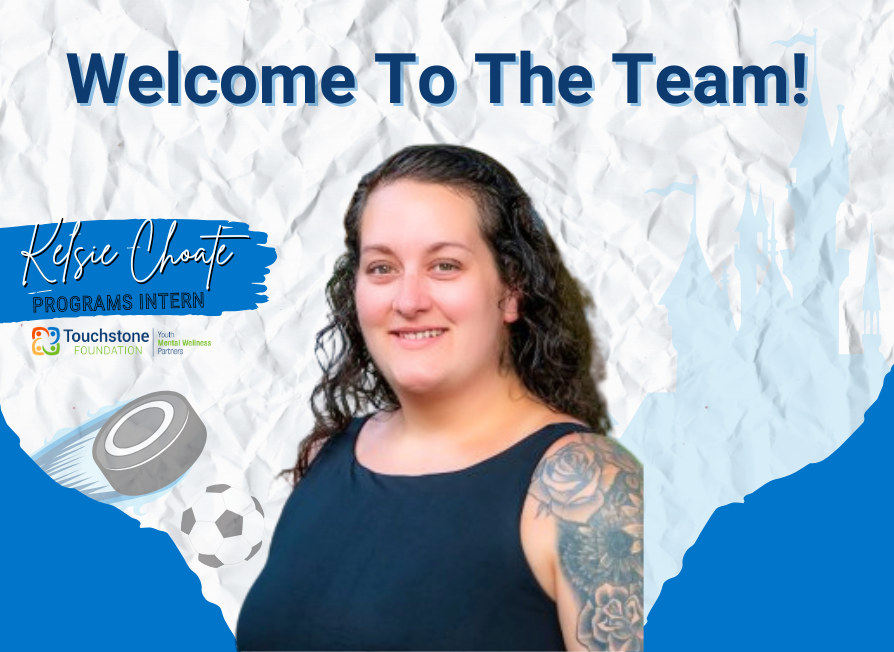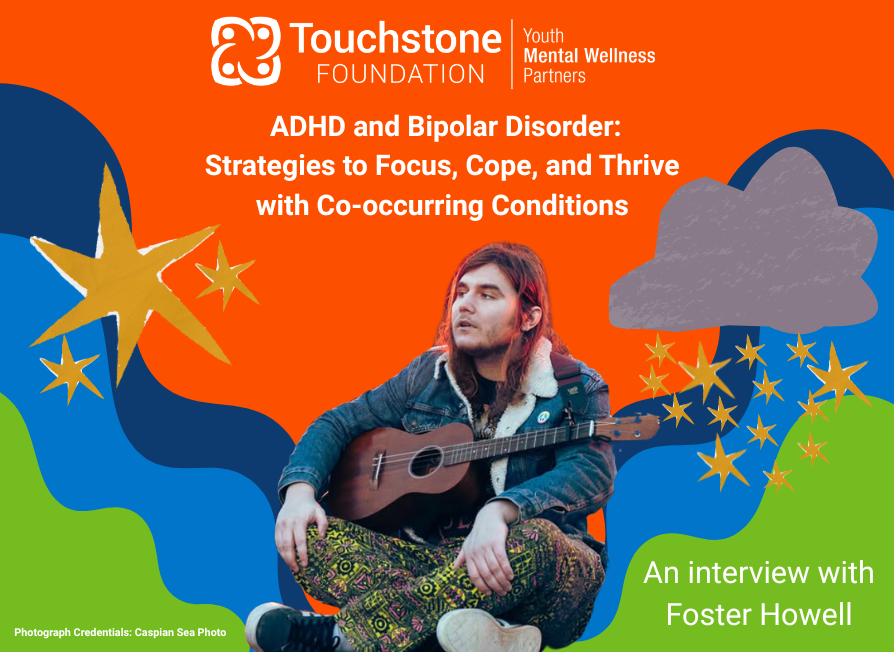
By Caroline Bruey, PsyD, BCBA
Caroline Bruey is Program is Program Supervisor of Autism Solutions at Lancaster-Lebanon IU13, and LOHF Board Member.
This post is third in a series on mental healthcare services in Lancaster County, Pa.
Although most people in the general population have heard of Autism Spectrum Disorder (ASD), this term is relatively new. The term “autism” was first coined in the 1950s by Dr. Leo Kanner, who identified a group of children demonstrating unique characteristics in social and communication skills, as well as odd repetitive behaviors. The most recent Center for Disease Control data indicates 1 in 54 children are on the autism spectrum.
Over the years, various theories of cause and intervention have been proposed, although many have been debunked by scientific research. For example, in the 1950s it was postulated that autism was due to poor parenting—a theory that has thankfully been thrown to the wayside!
Similarly, thousands of scientific studies have shown that vaccines do not cause autism. Current research indicates that ASD is a physiologically-based condition primarily linked to differences in brain structure and chemistry. There is clearly a genetic link, in that more than 80% of people on this spectrum have immediate or extended family members also diagnosed with ASD. Research continues across the globe to gather additional insight to the causes of ASD, so we can better understand how to treat those experiencing it.
What is Autism Spectrum Disorder?
The American Psychiatric Association published a book that includes an extensive list of diagnoses and diagnostic criteria called the “Diagnostic and Statistical Manual of Mental Disorders” (DSM-5). As per the DSM-5, a diagnosis of Autism Spectrum Disorder is warranted when a child demonstrates:
- Persistent deficits in social communication and social interaction across contexts, such as deficits in social-emotional reciprocity, nonverbal communication, and maintaining relationships.
- Restricted, repetitive patterns of behavior, interests, or activities such as stereotyped speech/motor movements, repetitive actions with objects, excessive adherence to routines, ritualistic behaviors, highly restricted/fixated interests that are abnormal in intensity or focus, and over/under reactions to sensory input.
Multiple behaviors in both categories must be present in early childhood in order to receive a diagnosis of ASD.
What strategies work best for children with ASD?
If your family includes a child with ASD, you have likely experienced moments of feeling overwhelmed and disheartened. Traditional parenting strategies can often be less than effective, leaving caretakers uncertain as to how to support their child. Fortunately, there are interventions that have been supported extensively in the literature and in practical settings.
These include:
Applied Behavior Analysis: ABA is a general approach that focuses on changing a child’s behavior through modifying various aspects of his/her environment, as well as our responses, to promote success. There are many books and online ABA resources that can be very beneficial for parents. These techniques are relatively easy to learn and can lead to substantial progress. In addition to written resources, various local agencies incorporate ABA into their own direct services for families (e.g., Intensive Behavioral Health Services; ABA clinics). Therefore, if you are seeking agency services, make sure to ask specifically if the staff are knowledgeable regarding ABA techniques.
Visual Supports: Generally, children with ASD learn more effectively when information is taken in through their eyes instead of their ears. Rather than relying upon speaking to their children to help them better understand a given situation, parents should provide visual cues such as Social Stories, Comic Book Conversations, Visual Activity Schedules, and Videomodeling videos. Parents are encouraged to search these terms online for various visual supports resources.
Structure and Organization: Most children with ASD thrive in environments that are relatively predictable and structured. Although home life is inherently less structured as compared to school settings, it is suggested that parents attempt to provide an organized and predictable an experience as possible for their children with ASD.
Addressing Behavioral Challenges: Due to their skill gaps in social communication, and their tendency to demonstrate repetitive/ritualistic behaviors or areas of focus, it is common for children with ASD to display behavioral challenges such as tantrums, physical aggression, self-injurious behaviors, etc. Fortunately, many of the techniques within an ABA approach focus specifically on identifying what purpose the child’s behavior serves and what positive, replacement behaviors can be taught. Therefore, all positive behavior support plans should be based upon ABA axioms.
Having a child on the autism spectrum can be daunting, overwhelming, scary—and wonderful. Fortunately, there are a variety of resources, service agencies, and support groups that will help support parents as they navigate the world of ASD. Here is an extensive list of resources parents may find useful.




